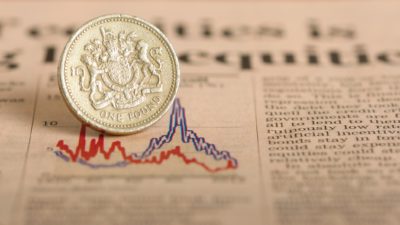Every quarter I take a look at the largest FTSE 100 companies in each of the index’s 10 industries to see how they shape up as a potential ‘starter’ portfolio.
The table below shows the 10 industry heavyweights and their current valuations based on forecast 12-month price-to-earnings (P/E) ratios and dividend yields.
| Company | Industry | Recent share price (p) | P/E | Yield (%) |
| ARM Holdings (LSE: ARM) | Technology | 881 | 33.3 | 0.9 |
| BHP Billiton | Basic Materials | 1,913 | 12.1 | 4.0 |
| British American Tobacco | Consumer Goods | 3,476 | 15.5 | 4.3 |
| GlaxoSmithKline | Health Care | 1,573 | 14.4 | 5.3 |
| HSBC Holdings (LSE: HSBA) | Financials | 597 | 10.6 | 5.4 |
| National Grid | Utilities | 837 | 15.1 | 5.2 |
| Rolls-Royce | Industrials | 1,069 | 15.5 | 2.3 |
| Royal Dutch Shell | Oil & Gas | 2,551 | 11.6 | 4.5 |
| Tesco (LSE: TSCO) | Consumer Services | 284 | 10.7 | 5.0 |
| Vodafone (LSE: VOD) (NASDAQ: VOD.US) | Telecommunications | 196 | 27.5 | 5.9 |
Excluding tech share ARM Holdings, the companies have an average P/E of 14.8 and an average dividend yield of 4.7%. The table below shows how the current ratings compare with those of the past.
| P/E | Yield (%) | |
| July 2014 | 14.8 | 4.7 |
| April 2014 | 13.6 | 4.6 |
| January 2014 | 13.6 | 4.5 |
| October 2013 | 12.2 | 4.7 |
| July 2013 | 11.8 | 4.7 |
| April 2013 | 12.3 | 4.6 |
| January 2013 | 11.4 | 4.9 |
| October 2012 | 11.1 | 5.0 |
| July 2012 | 10.7 | 5.0 |
| October 2011 | 9.8 | 5.2 |
As you can see, the group P/E rating of 14.8 is at its highest since I’ve been tracking the shares; and is moving towards expensive, on the basis that FTSE 100 long-term average is around 14. However, it’s worth noting that the P/E of Vodafone (27.5) is having a significant effect on the group average this quarter.
Vodafone
Vodafone’s P/E is currently so high because the company has sold its stake in cash machine Verizon Wireless, and is now in a position of having to invest — both organically and, more riskily, by acquisition — to replace the lost earnings (as well as funding shareholders’ dividends).
The replacement of lost earnings won’t happen overnight, and analyst forecasts have earnings covering only 62% of the predicted dividend payout. While Vodafone can dip into cash to make up the difference in the short term, this isn’t a sustainable situation.
As such, investors are very much relying on management’s ability to bulk up earnings through acquisitions if Vodafone is to maintain, let alone grow, the dividend — as well as justify that P/E of 27.5! The company looks a relatively risky proposition during this period of transformation.
ARM
Britain’s technology champion ARM has an even higher P/E than Vodafone. But ARM is a recognised high-growth company, and doesn’t have to do anything much different to what it has been doing to keep earnings soaring upwards. Furthermore, ARM’s current P/E is the lowest it’s been at any of my quarterly review dates.
When I spotlighted ARM at 795p this time last year, the P/E was 34.6. The shares are higher today, at 881p, but earnings progress over the year and further progress forecast by analysts for the next 12 months mean the P/E is now actually lower — at 33.3. So, this could be a good time to pick up a blue-chip tech stock that is always expensive relative to the wider market.
Tesco and HSBC
We’ve seen the reverse situation to ARM with troubled supermarket Tesco. I highlighted Tesco last quarter at 298p when the P/E was 10.3. While the price has now dropped to 284p, the P/E has actually risen to 10.7, because the company has suffered further earnings downgrades from analysts.
Similarly, HSBC — 611p last quarter; now 597p — has seen its P/E rise from 10.4 to 10.6. Still, both Tesco and HSBC are on well-below-average earnings ratings (and above-average dividend yields), so could reward long-term investors, even if analyst downgrades haven’t yet reached bottom.







